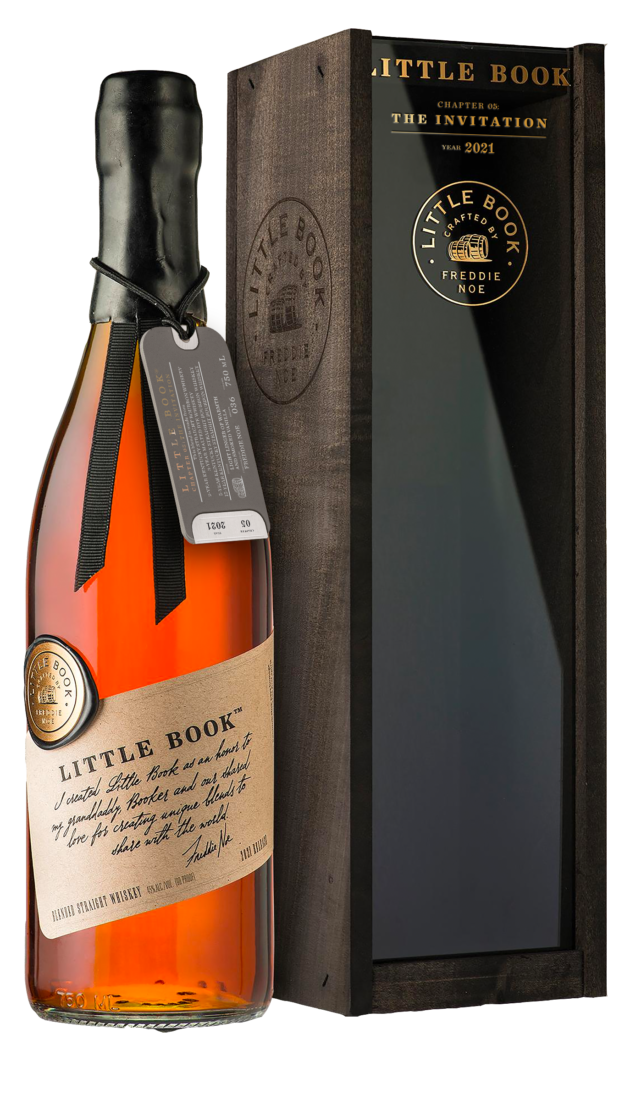Ever since Jacob Beam sold his first barrel of whiskey in 1795, a direct descendant has overseen the James B. Beam Distilling Co. as master distiller. Known as the “first family of bourbon,” the Beam family tree is not only intertwined with its namesake brand but has also touched nearly every major distillery in the industry.
The next chapter of the family’s story began during a ribbon-cutting ceremony held in May to open the new Fred B. Noe Distillery—a smaller facility on Jim Beam’s Clermont, Kentucky, campus—along with a new restaurant and expanded visitor’s center. During the ceremony, the company’s seventh master distiller, Fred Noe, great-grandson of James “Jim” Beauregard Beam, welled with fatherly pride as he made the surprise announcement that his son, Freddie Noe, would be the family’s eighth-generation master distiller. “Once my dad started to get choked up, I could tell that was probably what it would be, but I was definitely surprised,” Freddie Noe says. “It’s an amazing opportunity to continue doing what I love to do and carry on my family’s legacy.”
Now owned by Beam Suntory, Jim Beam has long been the world’s top-selling bourbon. Fred Noe’s father, Booker Noe, served as master distiller from 1965 through 1992, increasing production by a factor of twelve during his tenure, according to the company. He created one of the first barrel-proof bourbons, Booker’s Bourbon, in 1987, and coined the term “small batch” several years later with the introduction of Baker’s, Basil Hayden, and Knob Creek. Fred Noe has traveled the world promoting the brand and expanding global markets. He’ll continue in his role, while Freddie Noe will oversee the new Fred B. Noe Distillery, named for his father.

More than just father and son working alongside each other as Jim Beam’s first dual master distillers, the arrangement represents a shift in approach for the 227-year-old company. The Fred B. Noe Distillery is “a small distillery where we can purposefully do things differently,” Freddie Noe says. The distillery’s output is fractional compared to Jim Beam’s much-larger primary plant at Clermont, although still larger than most other distilleries, making about 60 to 75 barrels daily. Production of premium brands including Booker’s, Baker’s, and Little Book whiskey, created by Freddie Noe and named after the nickname given to him by his grandfather, will transition to the new plant, which “frees up the big distillery to run more Jim Beam,” Noe says.

While it takes more time to make the same amount of whiskey at the smaller distillery, Noe says increased variation among batches and barrels aging in the warehouses provides more options for blending specific flavor profiles. “When Granddaddy created those small-batch brands, he was doing it for a need to help educate and introduce people to the different flavors found in bourbon,” he says. “Today, people are even more curious about the differentiation of flavors in American whiskey.”
Noe has also blocked off roughly nine weeks out of the year for experimentation, including trying out different grains and grain preparations and studying how specific pieces of equipment impact the distillation process. “Some people say, ‘It’s got to be tough to innovate with all that history,’” he says. “But by staying so close to our history, we know what we’ve tried before, and knowing where to go becomes a little easier.”
The new distillery also includes a remote classroom that’s part of the James B. Beam Institute for Kentucky Spirits at the University of Kentucky, and a hands-on apprenticeship program to train the next generation of industry professionals. “Hopefully, my children and grandchildren can carry on the tradition,” Noe says. “But even if they don’t, it’s still setting up future generations of whiskey makers to have that knowledge and laying a foundation to make the legacy of bourbon a lot brighter and a lot broader. As my dad tells me, ‘Just leave it in a better place than when you picked it up.’”








